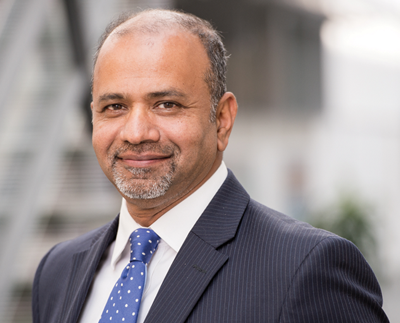
ONE LAST THING
Helping Medicine Get Personal
New technologies are disrupting the traditional health-care model.
Life happens at the nexus. For instance, one would not think of putting an astrophysics lab within a medical school (or at least not yet), but we humans are known to share the basic building blocks of life with the supernovas. There is a lot to learn about the chemistry of life and diseases from the chemistry of stars. Medicine, however, to a large extent has existed within its traditional boundaries including its practices, procedures, and treatments. Perhaps it’s time we erase the boundaries.
As recognition grows that despite being made of the same fabric, each one of us is as distinct as the billions of stars in the universe, the focus is shifting toward individualized, or personalized medicine. With this new recognition, a need for new science and technology has arisen. Germ theory and key microbiology concepts — championed by Louis Pasteur in the late 19th century linking microorganisms to disease — led to major reductions in infection-related deaths and gave rise to antibiotics and vaccines (the cornerstone of modern medicine), giving way to a “new germ theory.” Here, tiny microbes living within our gut, skin, mouth, and elsewhere that make up our microbiome are hailed as the guardian angels. New discoveries show that a change in the microbial population within our gut helps non-responders to cancer therapies become responders. Gut bacteria may contribute to the development of autism-like disorders of the brain. And differences in microbial population explain whether our brain, shaped by years of memories and experiences, may fail to remember simple tasks due to Alzheimer’s disease. So, the challenge becomes how to carefully cultivate a lifetime of microbial benefits.

Indeed, the brain is becoming the final frontier in our eternal quest to understand the human body. Although top-down approaches, with the brain being in charge of a variety of functions, have been useful and popular, my colleagues and I are beginning to draw the arrows in “the wrong direction;” we start from a tissue and go to the brain.
For example, because cognition is synonymous with verte-brates, one may posit whether the skeleton shapes our brain. Emerging evidence shows that bone-specific proteins cross the placenta and influence fetal brain development in utero.Gut bacteria derived from mothers at birth and during lactation control vitamin availability, causing some proteins to escape modifications and slip through the blood-brain barrier, find receptors, and improve cognition. Can bones then help our brain to recover later in the twilight years?
Fortunately, artificial intelligence — a tale of science fiction — is becoming a reality. The tools of data science and gene editing technology (CRISPR) are helping to tame the good, the bad, and the ugly microbes. Armed with new ideas (in the case of Rensselaer, the Institute for Data Exploration and Applications, a.k.a. IDEA), biotechnology centers like ours and across the world are using microbes and their unique combinations to cook up new molecules that never had a chance to persist in nature but can serve as therapeutics and perhaps as new antibiotics.

Genetically modified designer cells are promising to usher in a new era where an aberrant protein is caught in vivo, followed by the release of appropriate medication before diabetes has a chance to get a foothold in the body. One can only wonder how soon a “sense and dispense” approach packaged within a cellular pharmacy would disrupt the traditional health-care model.
So, we put the field of medicine on notice. Together, all of us, at Rensselaer and elsewhere, are marching across the traditional disciplinary boundaries as one, discovering new science, creating new technology, and enhancing personalized medicine.
E pluribus unum!















